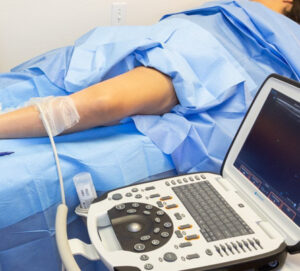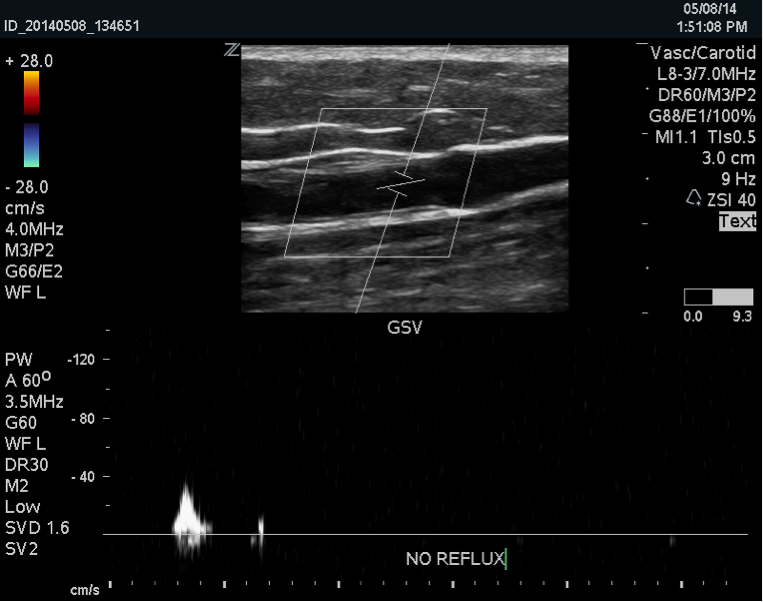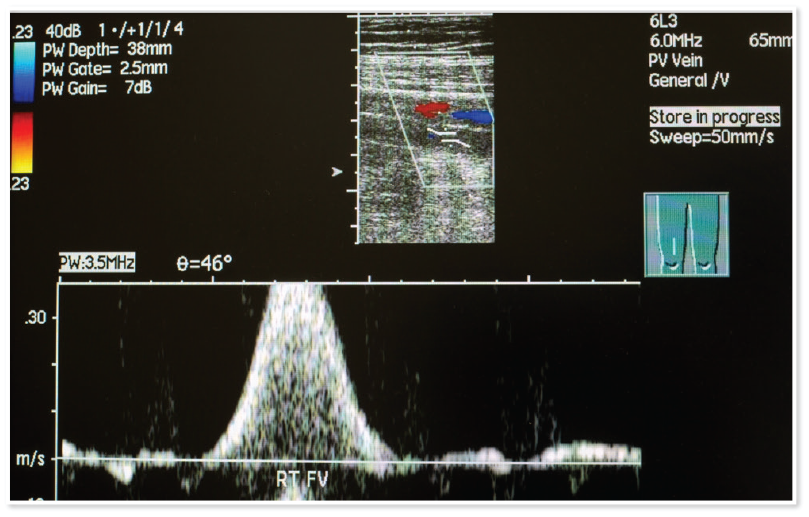Saphenous Vein Reflux Treatment
LJVascular2023-02-15T15:47:21-08:00ClosureFast™ an endovenous radiofrequency ablation (RFA) procedure
for the backward flow of blood (or “Venous reflux”) in your saphenous vein(s). The great saphenous veins and small saphenous veins are the two main superficial veins of the leg. They run along the inner leg and the back of the leg, respectively.
This minimally invasive procedure can be performed in the office in less than an hour and patients usually return to their usual level of activity the same day.

HOW DOES THE TREATMENT WORK?
The skin is numbed with lidocaine, then a tiny wire and the Closurefast® catheter are inserted into the vein. The catheter delivers radio-frequency energy to the vein wall, causing it to seal shut. The remaining healthy veins continue to bring blood back to the heart.
WHAT SHOULD I EXPECT ON THE DAY OF TREATMENT?
The procedure is performed with local anesthesia, but many patients elect to use a mild oral sedative (Valium), which is taken after checking in and
Diagram of endovenous laser ablation (EVLA) procedure
completing all paperwork. You will change into a gown and leave underwear on. Depending on the vein to be treated, you will lay on your back or on your belly. We do our best to make special accommodations (for example, if you cannot lie flat or cannot bend a knee very well) with body positioning and using pillows. We will do our best to make you comfortable. Then, we will give you the option of watching a movie on Netflix or listen to music. Once you are comfortable, you leg (s) will be prepped with cleansing solution for the sterile procedure. The doctor will perform an ultrasound to map the vein (s) to be treated. Then, a numbing agent (lidocaine) will be injected into the skin. In the numb area of the skin, a tiny puncture is made to pass the radiofrequency catheter. Your doctor will then use a needle to administer a combination of cool saline and local anesthetic around the vein either in the thigh or calf (depending on which vein is treated). This solution numbs the vein and insulates it from the surrounding tissue. After the numbing solution is applied, the vein is painlessly treated with radiofrequency energy.
Once your vein has been treated, we will clean your leg and apply a compression stocking which you will wear for 72 hours continuously. You will walk for 30 minutes prior to getting in your car.
“Bringing Experts Together for Unparalleled Vein and Vascular Care”
La Jolla Vein & Vascular (formerly La Jolla Vein Care) is committed to bringing experts together for unparalleled vein and vascular care.
Nisha Bunke, MD, Sarah Lucas, MD, and Elliot DeYoung, MD are specialists who combine their experience and expertise to offer world-class vascular care.
Our accredited center is also a nationally known teaching site and center of excellence.
For more information on treatments and to book a consultation, please give our office a call at 858-550-0330.
For a deeper dive into vein and vascular care, please check out our Youtube Channel at this link.
For more information on varicose veins and eliminating underlying venous insufficiency, check this link out full of resources.
Please follow our social media Instagram Profile and Tik Tok Profile for more fun videos and educational information.





